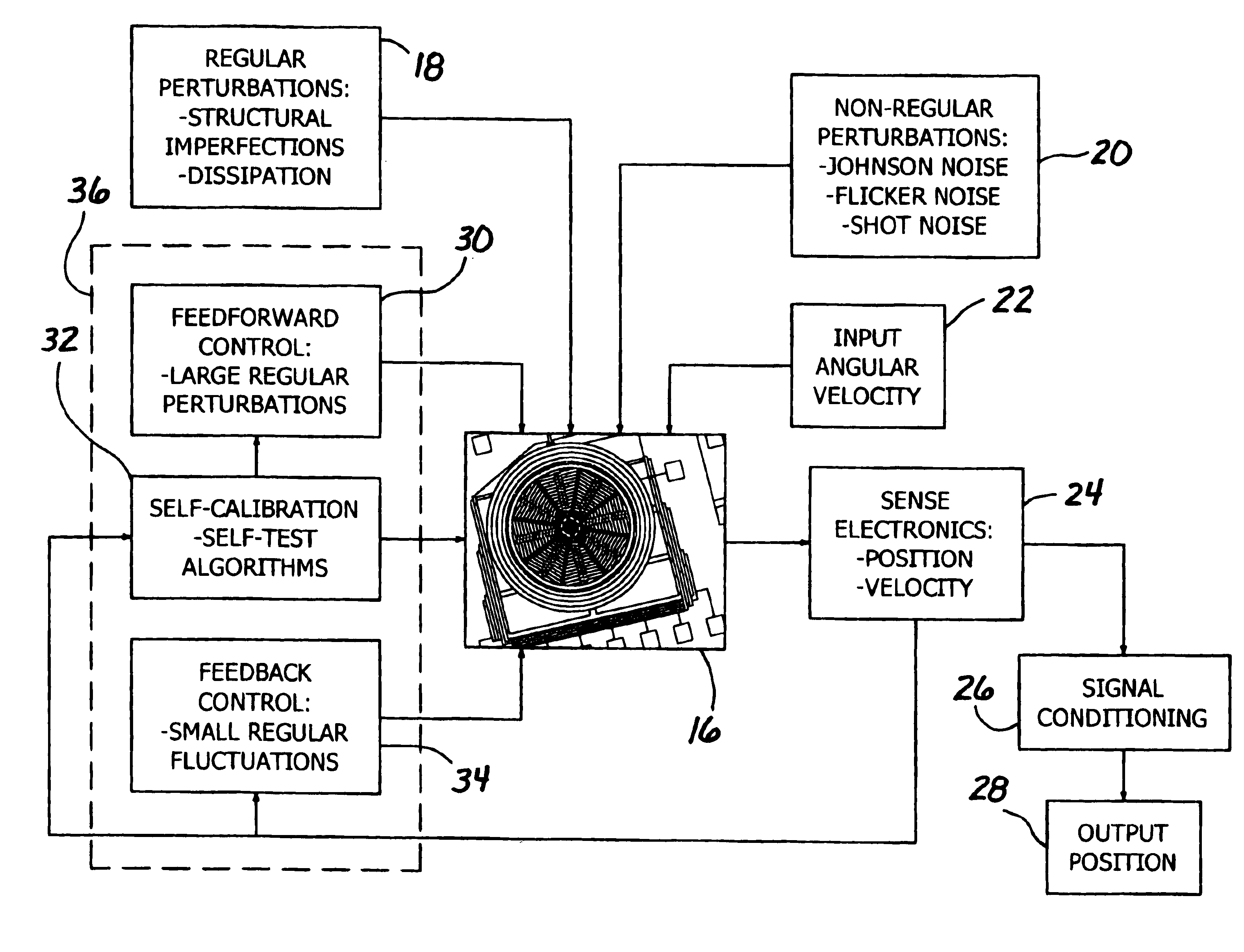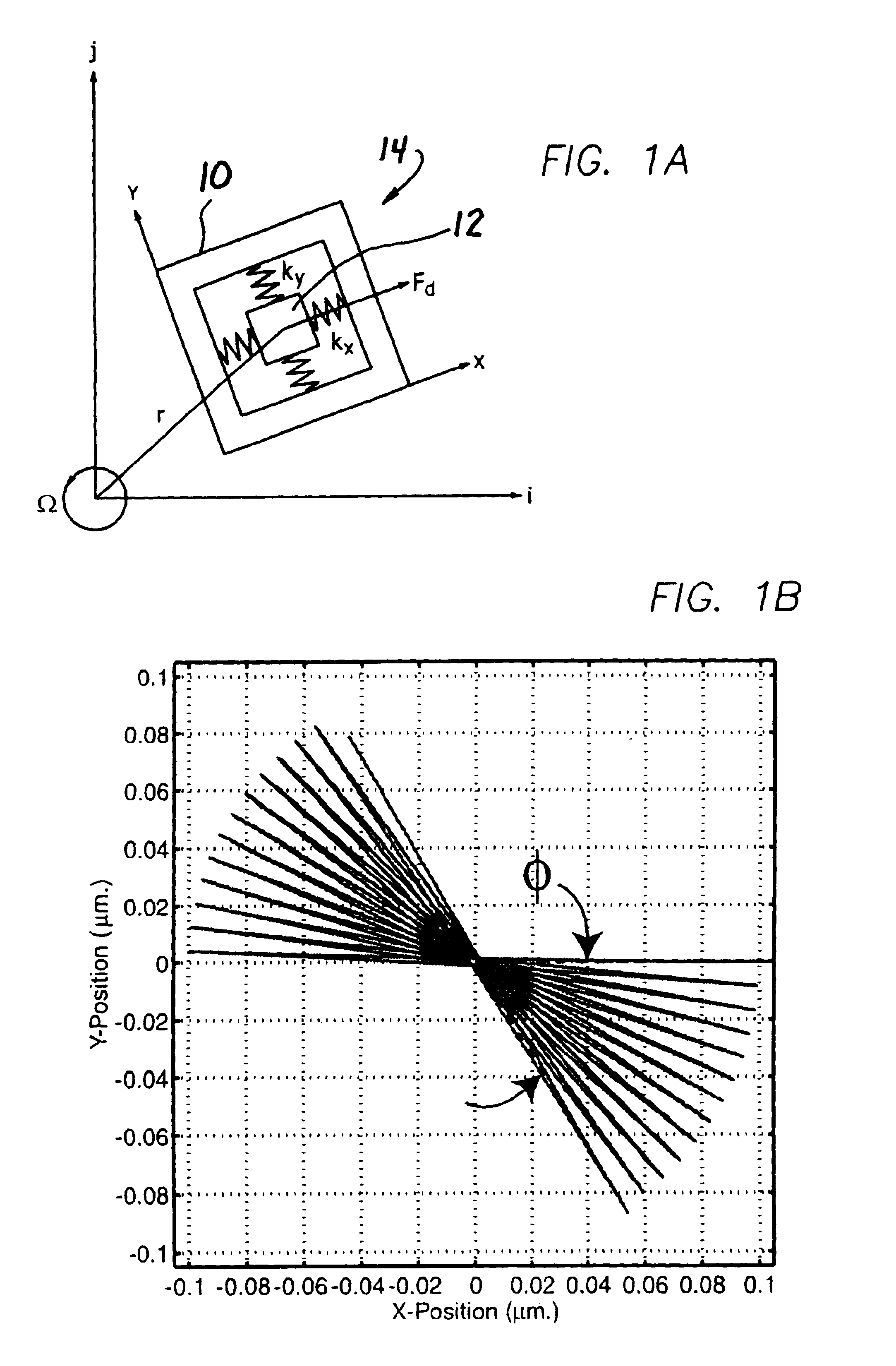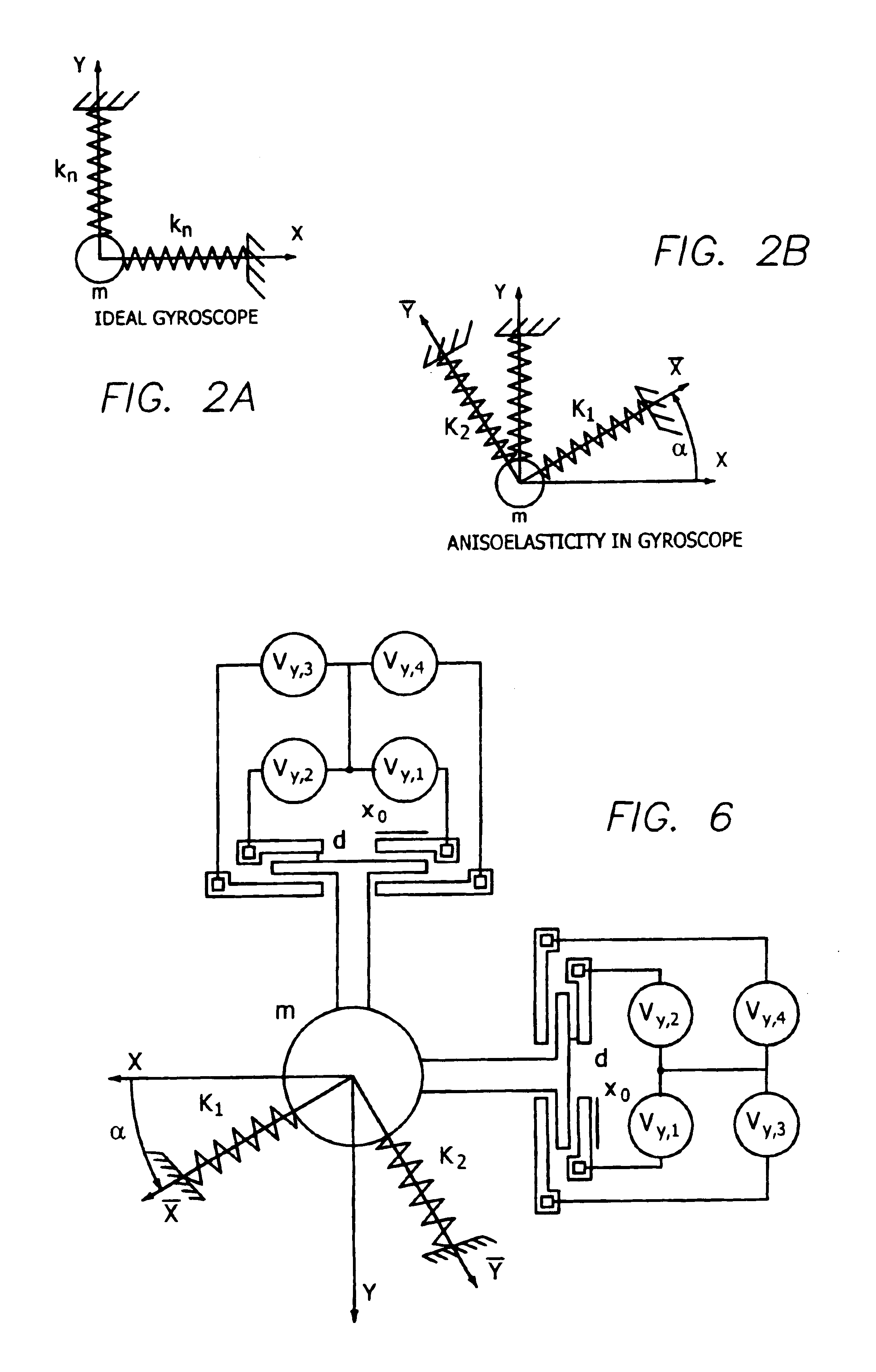Multi stage control architecture for error suppression in micromachined gyroscopes
a micro-machined gyroscope and control architecture technology, applied in the field of mems gyros, can solve the problems of large attitude errors, degradation of gyroscope performance, and no mems based gyroscope on the market capable of navigation grade, so as to reduce the time and cost of sensor calibration, eliminate large structural imperfections, and eliminate small perturbations
- Summary
- Abstract
- Description
- Claims
- Application Information
AI Technical Summary
Benefits of technology
Problems solved by technology
Method used
Image
Examples
Embodiment Construction
Gyroscope Principles
[0039]All micromachined gyroscopes are vibratory in nature, measuring either angular rates by detecting energy coupled between orthogonal vibration modes due to Coriolis force or angle of rotation through the precession of an oscillation pattern. In a rate gyroscope, a structural element is forced into oscillation in one principle structural mode, designated the “drive” mode. The presence of rotation induced Coriolis force couples the sustained oscillation into an orthogonal structural mode, designated the “sense” mode. The magnitude of vibration induced in the sense mode is proportional to the rotation rate of the device.
[0040]In a rate integrating gyroscope, the structural element is sustained in free oscillation and the presence of Coriolis force causes precession of the oscillation pattern, which is proportional to the angle of rotation of the gyro. As an illustration, consider a structural mass 12 attached to a frame 10 free to move in inertial space (i,j) a...
PUM
 Login to View More
Login to View More Abstract
Description
Claims
Application Information
 Login to View More
Login to View More - R&D
- Intellectual Property
- Life Sciences
- Materials
- Tech Scout
- Unparalleled Data Quality
- Higher Quality Content
- 60% Fewer Hallucinations
Browse by: Latest US Patents, China's latest patents, Technical Efficacy Thesaurus, Application Domain, Technology Topic, Popular Technical Reports.
© 2025 PatSnap. All rights reserved.Legal|Privacy policy|Modern Slavery Act Transparency Statement|Sitemap|About US| Contact US: help@patsnap.com



